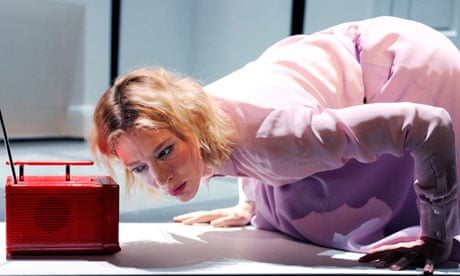How times change. When Botho Strauss's play was first seen in Britain in 1983 it was greeted with boos and mass walkouts on its pre-West End tour.
Now it arrives in a crisp new Martin Crimp translation and an exciting Sydney Theatre Company production that yields a tumultuous performance from Cate Blanchett and is met with wild enthusiasm. But we're not just applauding a great performance; we've also finally caught up with Strauss's play.
It would be all too easy to describe it as a study in postwar alienation. Actually, it is about a woman who desperately wants to belong. Accordingly, Strauss sends his eager heroine, Lotte, on a contemporary odyssey, where she encounters a series of cold shoulders. Starting as an outsider on a Moroccan package tour, she oscillates between the German cities of Saarbrücken and Essen, only to be rejected by her husband, spurned by an old schoolmate and ostracised by her brother, potential employers and total strangers.
Psychologically, the play is an acute study of a chattering, cock-eyed optimist who is too good for the world she inhabits. At the same time, Strauss offers a satiric portrait of our grossly materialist society and asks why any sane person would want to be part of it. Far from being dated, the play now seems more topical than ever.
Strauss has also written one of the best parts for a woman in the modern repertory and Blanchett inhabits it with every fibre of her being.
What she conveys, from the opening Moroccan monologue, is Lotte's desperate hunger for human contact: she sniffs her armpits and sprays her genitalia to ensure that personal hygiene is not her problem. That physicality underlies the whole performance, in which Blanchett at one moment skips like a frisky puppy, at another dances with the frenzy of an over-wound doll. But, above all, she conveys the feeling of being the outsider always looking in, whether peering through vast Edward Hopper-like windows or pressing her features against a pane of frosted glass.
"I'm one of the righteous," Lotte tells an alarmed stranger at a bus stop; and Blanchett, in one of the most dazzlingly uninhibited performances I've ever seen, suggests a garrulous angel who doesn't quite belong on earth.
We shouldn't, however, be surprised by her success. She was a stage animal long before she went into films. As co-director of the Sydney company, she has also had the wit to engage Benedict Andrews as director and what he brings out, through Johannes Schütz's sets, is Strauss's strange mix of realism and expressionism. An apartment block, for instance, looks like a miniaturised version of New York's Flatiron building and an office is evoked through a diagonal line of oddly unoccupied desks.
Through his minimalist approach, Andrews cleverly suggests the cosmic implications enshrined in the title of Strauss's play. At times, the piece slips into a mechanical whimsy. But it survives through its portrait of a woman reduced to desperation by the indifference of a world consumed by getting and spending. And it is good to see the play restored to life by a strong Australian company in which Anita Hegh, Belinda McClory and Chris Ryan all make their mark.
It is, however, Blanchett who will long be remembered for her moving passage from a figure of bounding, irrepressible energy to one shrouded in silence like a Samuel Beckett character staring into the abyss.

Comments (…)
Sign in or create your Guardian account to join the discussion